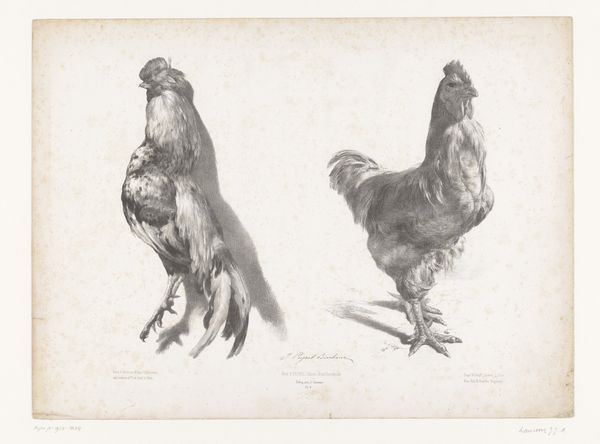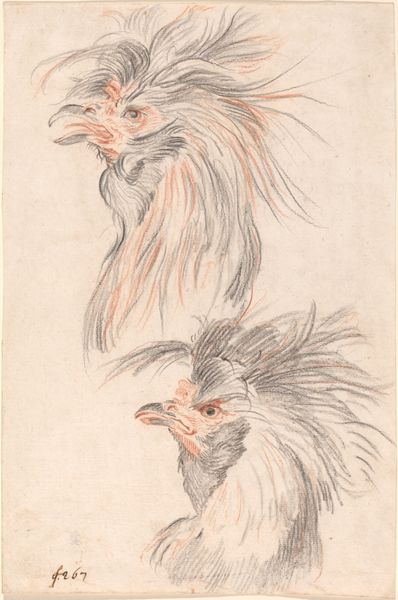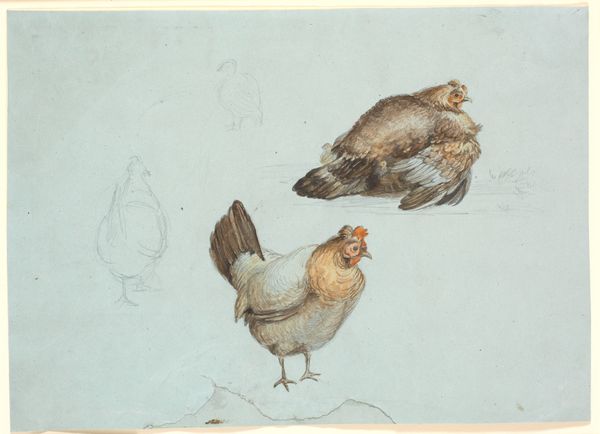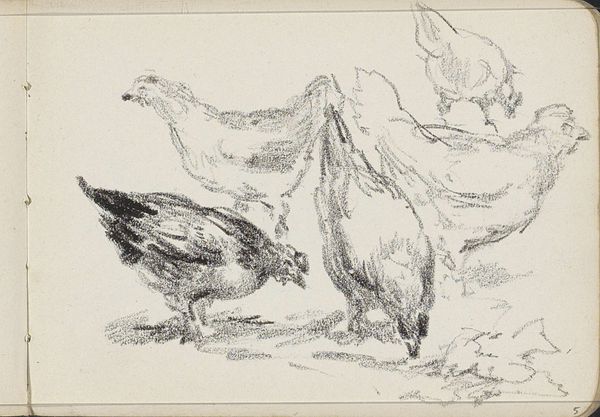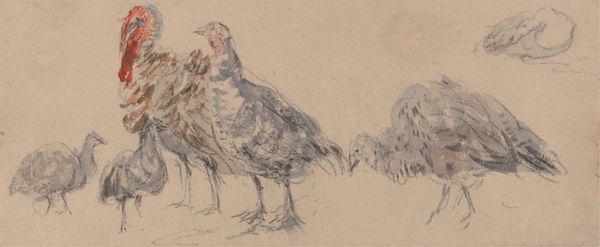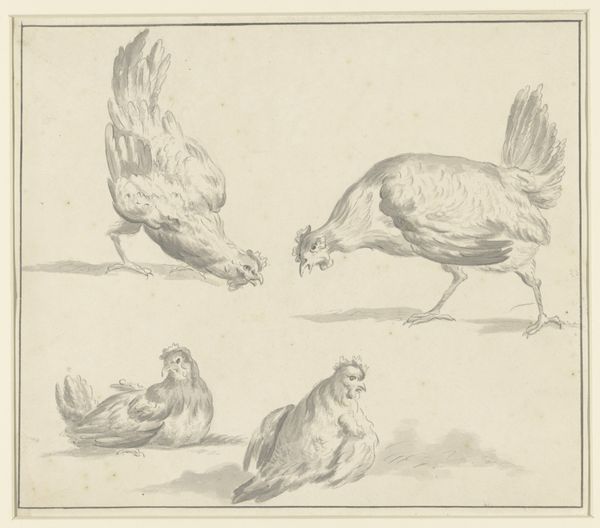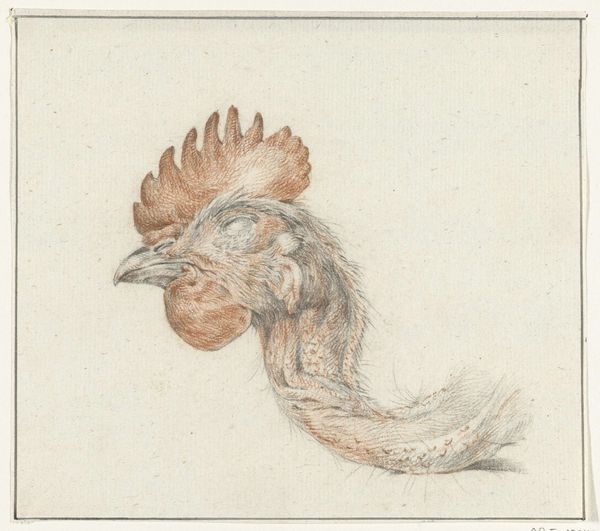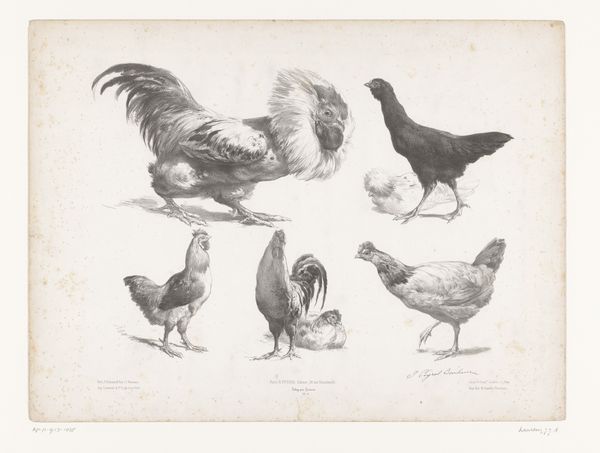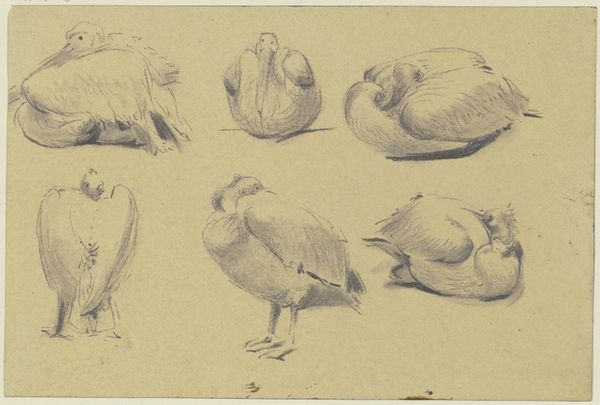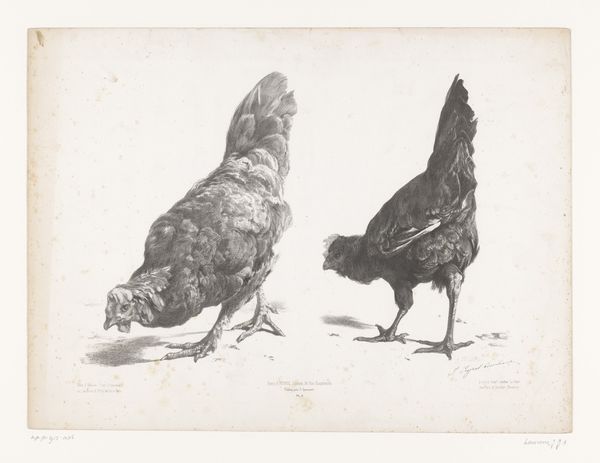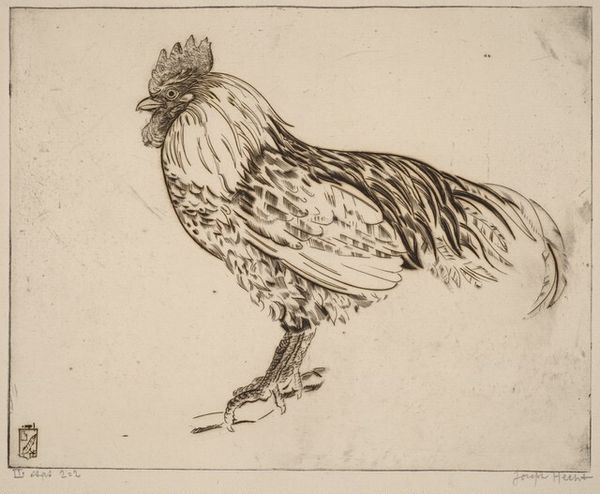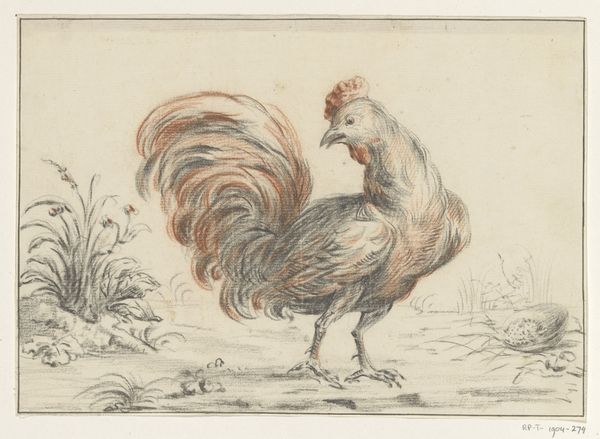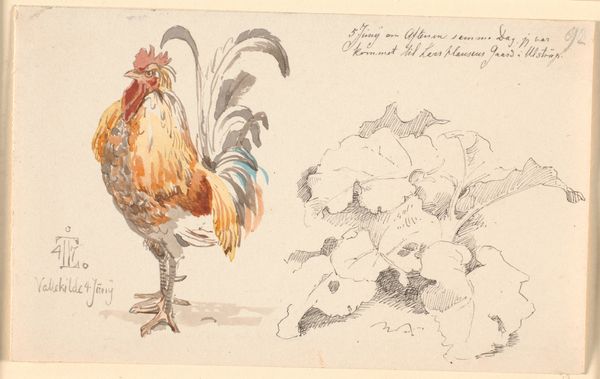
Eagle. Two studies of an antique sculpture; front view half turned to the right, and front view half turned to the left 1628 - 1630
0:00
0:00
drawing, graphite
#
portrait
#
drawing
#
baroque
#
animal
#
pencil sketch
#
figuration
#
form
#
pencil drawing
#
graphite
Dimensions: 216 mm (height) x 328 mm (width) (bladmaal)
Curator: Before us is "Eagle. Two studies of an antique sculpture; front view half turned to the right, and front view half turned to the left" created by Willem Panneels between 1628 and 1630. Editor: My initial impression is one of texture. The cross-hatching and stippling used to define the feathers give the drawing an almost tactile quality. It’s intriguing how a graphite or pencil sketch can evoke such depth. Curator: It is interesting to situate Panneel's drawing within its historical moment. Consider the symbolism of the eagle, a creature often associated with power, empire, and even divine authority. This resonates deeply within a context marked by absolutist regimes and burgeoning colonial enterprises. The rendering of this powerful symbol through meticulous study makes me think about themes of dominance and the gaze. Editor: Yes, the precision is striking. Look at the detail in the claws and beak. Semiotically, we can see how the artist uses line and shadow to build form, guiding our perception to recognize the distinct characteristics of the eagle – its sharp talons, powerful stance and commanding presence. Curator: And furthermore, who held such power, historically? These are images and concepts rooted in class, gender and racial constructs – how do they permeate into this classical figure? Even a simple art-historical assessment quickly falls apart because it's an insufficient reflection of its meaning. The antique sculpture here has been given new meaning, a Baroque update. Editor: I appreciate how Panneels captures the three-dimensionality of the sculpture using only shading and line work. The repeated directional lines create both the depth and volume; we can note especially the interplay of light and shadow. And, in contrast to those directional lines, the eagle itself projects dynamism within a seemingly static form. Curator: True. We also must contemplate art's role as a historical recorder and ideological perpetuator. We see the eagle throughout European history used to justify political agendas. Studying it compels me to interrogate what meanings were consciously being transmitted through representing this statue. What ideologies did it normalize through its display and artistic study? Editor: I'm struck again by the artist's eye for detail – a kind of proto-photographic lens that reveals form. It gives us something substantial to unpack and consider the construction of an image that also serves social messaging, even today. Curator: It has been a rather compelling investigation, bringing a confluence of insights to understand Willem Panneel's "Eagle. Two studies of an antique sculpture." Editor: Yes, seeing how you've provided the context around form, it really does shift what is understood.
Comments
No comments
Be the first to comment and join the conversation on the ultimate creative platform.
